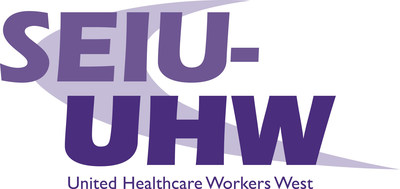Subjects: SVY, LBR, POL, AVO
SEIU: Stanford Gets More Federal Stimulus Money than Any Hospital System in CA Even as it Imposes Wage Cuts on Frontline Workers, Report Reveals
PALO ALTO, Calif., May 11, 2020 /PRNewswire/ -- A new report reveals that Stanford Health Care received more money from the federal CARES Act stimulus package than any other health system in California ? $102.4 million ? more than twice what they are estimated to be saving by cutting frontline employees' pay during the coronavirus pandemic, with more money likely on the way.
The discovery of Stanford Health Care's large federal payment raises another troubling question about why it would cut the pay of its own workers in the middle of the health crisis. The payout is the third most paid to any healthcare provider in the country, and it's one of several clear indicators that Stanford could well-afford to financially weather the coronavirus storm without putting their already stressed frontline healthcare workers in financial peril.
"It seems like it's never enough for Stanford Health Care ? they want to get their hands on every dollar they can, even if some of those dollars come from our hands, the people who can least afford it," said Sarah Jane Von Wettberg, a cook. "Instead of taking the COVID-19 federal money and using it to keep employees working full time taking care of patients in a pandemic, they are using it to build up their bottom line. They should be ashamed."
The federal payment is just the first Stanford Health Care is expected to get from the stimulus money. So far, $50 billion has been spent from the $100 billion in CARES Act Provider Relief Fund earmarked for healthcare providers, and Stanford is likely in line to receive more than the $102.4 million. The payment is more than twice as much as an estimated $40.3 million Stanford Health Care could save from the pay cuts for all of its 14,000 workers.
Stanford University also sits on a $27.7 billion endowment, about half of which can be spent at the university board's sole discretion and could be used to protect frontline healthcare workers, and Stanford Health Care had $708 million in cash reserves, which could be used to help maintain regular staffing levels in the hospital.
Workers also questioned Stanford's decision to impose furloughs on Environmental Services workers who clean hospital rooms ? including those occupied by COVID-19 patients ? after having its fiscal year 2020 Medicare payments cut because it was in the bottom 25 percent of hospitals in the nation with respect to hospital-acquired infections and patient safety indicators, according the federal government's Centers for Medicare and Medicaid Services.
Stanford Health Care abruptly announced two weeks ago that it would require its employees to take 96 furlough hours over a 10-week period, which amounts to a 20 percent pay cut during that time. Many of the workers affected by the cut make between $55,000 and $65,000 a year, and the pay reduction will make it difficult for them to pay their rent, buy groceries and take care of their families.
Stanford employees said the furloughs have a different impact on frontline workers making $60,000 a year than they do on CEO David Entwistle, who in 2018 made $2.78 million. A 20 percent cut for the CEO over 10 weeks would still leave him $2.65 million to live on.
Entwistle's salary and bonus alone are almost as much as the entire $2.9 million payroll savings from the 20 percent cuts for more than 2,000 SEIU-UHW members at Stanford Hospital.
SEIU-United Healthcare Workers West (SEIU-UHW) is one of the largest unions of hospital workers in the United States, with 97,000 members. Learn more at www.seiu-uhw.org.
SOURCE SEIU-United Healthcare Workers West
These press releases may also interest you
|
News published on and distributed by:




